Tag: Madison Palmieri ’22
“Right Where You Left Me”
by Patrick T Fuller on February 4, 2021
Arts & Entertainment
Taylor Swift Releases Second Surprise Album, evermore
by Madison Palmieri ’22
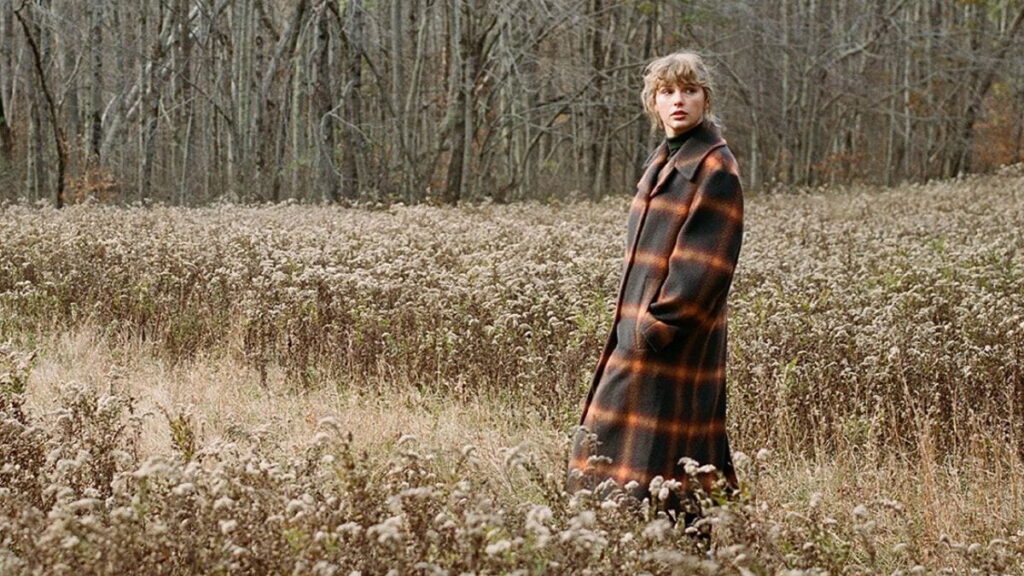
Less than five months after surprising fans with the unexpected release of her eighth studio album, folklore, Taylor Swift announced on Dec. 10 that a second unprecedented album, evermore, would be released that night.
On Instagram, she described the project as “folklore’s sister record” and explained that she and her collaborators “were standing on the edge of the folklorian woods and had a choice: to turn and go back or to travel deeper into the forest of this music. We chose to wander deeper in.”
She mused that “there was something different with folklore. In making it, I felt less like I was departing and more like I was returning. I loved the escapism I found in these imaginary/not imaginary tales.”
Evermore represents a continuation of folklore’s thematic and lyrical maturity as well as its compositional tendency away from radio-friendly hits and towards more alternative tracks. However, it stands apart from its “sister” in terms of metaphor use and world-building.
For instance, the album’s first single and opening track, “willow,” uses the titular tree to express how the speaker’s partner fundamentally altered their life with the recurring assertion that “life was a willow, and it bent right to your wind,” supplemented by wordplay in lines such as “lost in your current like a priceless wine” and “I come back stronger than a ’90s’ trend.”
Track two, “champagne problems,” one of Swift’s strongest efforts on the album, tells the tale of a rejected marriage proposal. Its bridge culminates in a crescendo of stream-of-consciousness as the speaker recollects what others said about the unfortunate event: “‘She would’ve made such a lovely bride, what a shame she’s f—ed in the head,’ they said.” The song’s title could doubly mean “sham pain problems”—a witty nod to feminist frustrations with the notion that a woman’s rejection of her partner’s proposal insinuates she has a mental disorder.
Swift’s clever word play is additionally evident in “gold rush,” a song whose genius titular metaphor for developing feelings for someone universally adored is strengthened by the vivid imagery of lines such as “I don’t like slow motion double vision in a rose blush / I don’t like that falling feels like flying ’til the bone crush” and “your hair falling into place like dominoes” as well as a cheeky reference to her eighth studio album: “my mind turns your life into folklore.”
“’Tis the damn season” tells the story of a pair of former lovers who reunite for the holidays when the speaker returns from Los Angeles and, in a clever reference to Robert Frost, admits that “the road not taken looks real good now / And it always leads to you and my hometown.”
“Tolerate it” and “no body, no crime” are similarly able to compress a novel’s plot into several minutes of song. The former track describes a decaying relationship in which the speaker feels merely “tolerated” by their “older” and “wiser” partner. Lines such as “I’m begging for footnotes in the story of your life / Drawing hearts in the byline” reinforce the narrator’s sense of desperation and helplessness.
The latter track, while nearly opposite of “tolerate it” in theme, is an equally strong example of Swift’s masterful storytelling abilities. With backing vocals from HAIM, she inserts herself into a crime thriller involving Merlot, mistresses, and murder in a darkly humorous effort that stands apart from the rest of the singer’s discography.
Track seven, “happiness” is significantly more somber than “no body, no crime,” but is nonetheless another perfect example of Swift’s gift for lyrical composition as well as her love of literature. Phrases such as “my eyes leak acid rain on the pillow where you used to lay your head” convey the song’s mourning over the end of a relationship. References to The Great Gatsby appear in lines such as “I hope she’ll be a beautiful fool” and “all you want from me now is the green light of forgiveness.”
Swift reinforces the idea that folklore and evermore are sister albums with a lyrical callback to the opening lines of the former record’s seventh track, “seven”: “Please picture me in the trees,” with a similar opening to “happiness”: “Honey, when I’m above the trees / I see this for what it is.”
“Dorothea” conveys a longing for a former friend or lover who has become famous, while “coney island,” which features The National, uses the idea of a theme park to ruminate on what remains of a relationship after “the fast times, the bright lights, the merry go.”
Track 10, “ivy” continues the album’s pastoral motif as established by “willow,” using the weed’s unwelcome presence, destructive abilities, and overpowering nature to symbolize the devastating effects of an affair on a marriage, especially in the line “I can’t / Stop you putting roots in my dreamland / My house of stone, your ivy grows / And now I’m covered in you.”
“Cowboy like me” likewise showcases Swift’s gift for figurative language as she compares a pair of lovers to cowboys and bandits in a Bonnie-and-Clyde-esque tale. “Long story short,” perhaps the most musically and thematically upbeat song on the album, sees the speaker reflect on their troubled past and acknowledge their partner’s role in positively changing their life.
Track 13, “marjorie,” is an elegy to Swift’s grandmother, which encapsulates the loss of loved ones endured by many throughout the COVID-19 pandemic. In another parallel reinforcing the two albums’ sisterhood, folklore’s 13th track, “epiphany,” directly compares Swift’s grandfather’s experiences fighting in World War II with the struggles faced by healthcare workers during the pandemic.
Similar to “champagne problems,” “marjorie’s” power comes from its bridge, which is both heartbreakingly universal, with phrases such as “I should’ve asked you how to be / Asked you to write it down for me / Should’ve kept every grocery store receipt / ’Cause every scrap of you would be taken from me,” and devastatingly specific, with a reference to Swift’s grandmother’s career as an opera singer: “All your closets of backlogged dreams / And how you left them all to me.”
In “closure,” the narrator addresses someone attempting to neatly end a relationship with them, frustrated that the addressee insincerely wants to wash their hands of the failed connection. The album’s title track, “evermore,” in contrast, returns to the theme of healing present in “long story short,” in a piano-driven duet with Bon Iver.
Track 16, “right where you left me,” immerses listeners in the halted world of a jilted woman, who remains “23 inside her fantasy” in the dim light of a restaurant after her partner breaks off the relationship. The song presents a deliberate contrast with the album’s closer, “it’s time to go,” in which the narrator speaks to “that old familiar body ache / The snaps from the same little breaks in your soul” and assures listeners, “you know when it’s time to go.”
Whether Swift embraces this outlook in her future music and further diversifies the sonic and lyrical content of her discography or ventures even deeper into the “folklorian woods,” evermore’s demonstration of Swift’s abilities confirms that, with regard to her musical genius, she is right where we left her.
Real Life Tragedy: Intermission Called for Broadway
by The Cowl Editor on November 13, 2020
Arts & Entertainment
Pandemic Brings Down the Curtain on Live Theatre
by Madison Palmieri ’22 A&E Staff
While the COVID-19 pandemic has undoubtedly altered everyday life, it has also negatively impacted the special events that make the everyday extraordinary. This unfortunate consequence has manifested not only in the absence of summer music festivals and limited attendance at sporting events, but also in the closure of theaters.
Theatre presents a unique challenge: unlike musical artists, actors, who typically rely on costuming, scenery, and their fellow actors, cannot easily share their talents with an audience from home. Unlike sporting events like baseball and football, typically played in outdoor arenas, most major theaters are indoors venues, which presents more of an opportunity for coronavirus to spread.
Broadway initially shut down on March 12, at the onset of the outbreak of the pandemic in the United States, when most other public venues closed their doors. Although actors and fans alike have remained hopeful that the show will soon go on, these theatre devotees will unfortunately have to wait a while longer before they can again experience the magic of a live show. According to an Oct. 9 Playbill article by Ryan McPhee, aptly titled “Broadway Officially Extends Theatre Shutdown,” “the trade association has announced that all Broadway productions will remain closed through May 30, officially extending the hiatus that was previously scheduled through January 3.”

Although certainly disappointing to avid theatergoers, this news is most tragic for those whose livelihood and income depends on the ability of live theatre to operate. McPhee explains that while Congress’ Save Our Stages bill “would authorize $10 billion in grants to live venue operators to cover rent, payroll, and more during the extended shutdown,” it is “included in the House of Representatives’ current Heroes Act, which remains stalled on the Republican-controlled Senate floor.”
Nonetheless, McPhee notes, “initiatives like the Be An #ArtsHero campaign have underscored the economic contribution the arts provides and the need for relief to arts workers now unemployed or facing income loss.”
Despite such efforts, numerous Broadway shows have been forced to close throughout the course of the pandemic: Who’s Afraid of Virginia Woolf, Beetlejuice, and Frozen were some of the COVID casualties.
However, theatre fans will soon have something to look forward to. With nominations announced by actor James Monroe Iglehart on Thursday, Oct. 15, the 2020 Tony Awards are set to be presented in a virtual format sometime in the near future.
The show will certainly be one to remember, not only for its prolonged ceremony and virtual presentation, but also for its celebration of dedication, talent, and love of theatre in the midst of this difficult time.
While viewers will certainly be interested to see whether well-known nominees such as Jake Gyllenhaal and Tom Hiddleston take home an award, perhaps the most-anticipated moment in the show will be the fate of the “Best Leading Actor in a Musical Category,” whose lone nominee, Aaron Tveit for Moulin Rouge! The Musical, needs a 60% affirmative vote by the Tony voters in order to receive the award, according to the Tony Awards rules and regulations.
Thus, although the pandemic has forced the theatre world into an intermission, the show must—and will—go on.
Fact-Checking Frankenstein’s Creature
by The Cowl Editor on October 29, 2020
Arts & Entertainment
The Common Misconception about the Halloween Monster
by Madison Palmieri ’22 A&E Staff
If asked to name the most iconic creatures associated with Halloween, Frankenstein’s monster would likely come to mind. Indeed, the giant, green, raggedly-stitched monster is a quintessential symbol of the spooky holiday.
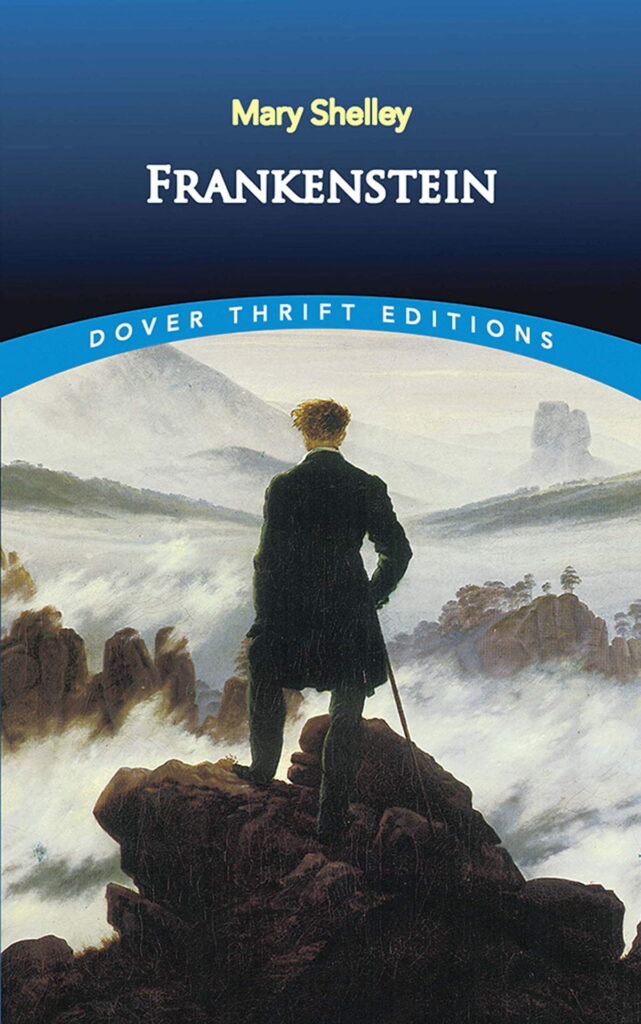
Frankenstein’s creature has been brought to life in over 20 television and film adaptations, from the 1910 silent film Frankenstein to the 2019 horror film Depraved. The creature’s influence also expands beyond traditional forms of media. For instance, each Halloween, General Mills sells a “Franken-Berry” cereal. Needless to say, Frankenstein’s creature is a staple mythic figure in Western society; however, this monster is not exactly who people think he is.
The tale of Frankenstein’s monster begins with its creator, English writer, Mary Shelley. According to History.com, “Mary Shelley created the story on a rainy afternoon in 1816 in Geneva, where she was staying with her husband, the poet Percy Bysshe Shelley, their friend Lord Byron and Lord Byron›s physician, John Polidori. The group, trapped indoors by the inclement weather, passed the time telling and writing ghost stories.”
Evidently, Shelley’s tale haunted her, as she developed it into a novel over the course of the year and eventually published it on Jan. 1, 1818. In the final version of Frankenstein, as History.com explains, “A scientist animates a creature constructed from dismembered corpses. The gentle, intellectually gifted creature is enormous and physically hideous. Cruelly rejected by its creator, it wanders, seeking companionship and becoming increasingly brutal as it fails to find a mate.”
From this description, as well as from prior knowledge, it would appear to be obvious that this creature is Frankenstein; however, the monster, the creation of Dr. Victor Frankenstein, goes unnamed.
Obviously, today, the name Frankenstein conjures not images of this frazzled man in a lab coat, but rather his green, monstrous creation. This misidentification may be due to the novel’s title: the simple Frankenstein—more commonly used than its alternative title, The Modern Prometheus—could lead those who had not read the book to associate its title with its most well-known character.
This phenomenon may have also occurred when Shelley’s novel was adapted for the stage and screen. According to the entertainment website, The Mary Sue, “Somewhere in the past 195 years, people began referring to The Creature itself as ‘Frankenstein.’ We’re not sure exactly when that happened, but our theory is that it happened around the time of the 1931 James Whale Universal Studios adaptation. The poster for which, prominently features The Creature and the word ‘Frankenstein.’ Anyone not familiar with the story, could easily conclude that the monster in the poster is named Frankenstein.”
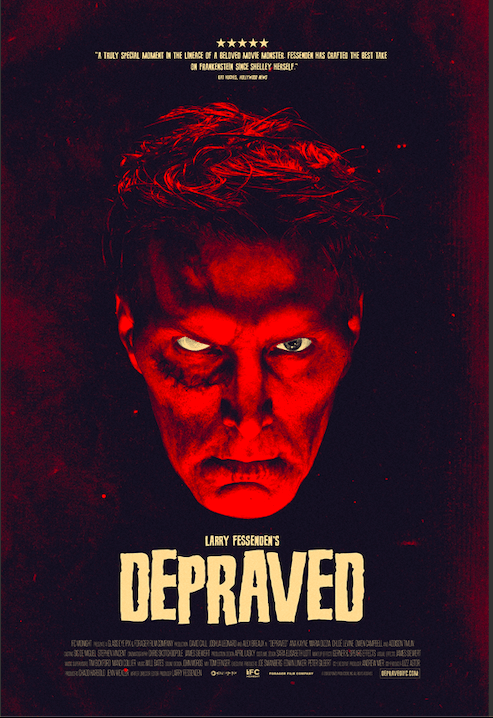
The site also suggests, however, that this modern misidentification might not be entirely incorrect: “The Creature considers himself the child of Victor Frankenstein. He self-identifies as a Frankenstein, and we think that choice should be respected. That’s why calling The Creature by that name isn’t actually incorrect. He thinks he is the son of Victor Frankenstein, so it makes sense that he would take that name.”
Regardless of whether Frankenstein’s monster has a rightful claim to the famous name, it is clear that society has Mary Shelley and her 1818 novel to thank for one of Halloween’s most recognizable symbols.
American Gothic: Netflix’s The Devil All the Time
by The Cowl Editor on October 15, 2020
Film and Television
How Two Small Towns Reveal the Evil Capabilities of Man
by Madison Palmieri ’22 A&E Staff
One of the year’s most-anticipated films, The Devil All the Time, premiered in select theaters on Friday, Sept. 11 to positive reviews before debuting on Netflix the following Wednesday and reigning atop the streaming service’s Top 10 list.
The movie is based on the 2011 horror novel of the same name by Donald Ray Pollock, who narrates the film.
His words guide a dark, grotesque tale of the twisted, tormented souls who inhabit two southern-midwest towns in the post-World War II United States. The trials and tribulations of the Russell family intersect with the sadistic follies of a criminal couple, an unholy preacher, a crooked sheriff, and a host of other sinners. Any and all characters with any semblance of innocence are debased and sacrificed in a chilling portrait of human evil and religious hypocrisy.
Notably, the movie boasts an all-star cast: Tom Holland stars as the tragically corrupted Arvin Russell, Robert Pattinson plays the wickedly unpious Revered Preston Teagardin, Bill Skarsgård features as the maddened war veteran Willard Russell, Sebastian Stan stars as the cunning, vengeance-seeking Deputy Lee Bodecker, and Harry Melling plays the charismatic preacher-turned-madman Roy Laferty.
As the title implies, the film is largely concerned with the nature of sin and evil. However, its imagery is profoundly Christian, with a soundtrack of hymns, a plethora of pivotal scenes set in churches, and a recurring motif of the cross. Throughout the film, all of these elements are juxtaposed with some form of evil, whether it be in word or deed, to convey a deeply-rooted false piety and religious hypocrisy. Although not a new idea, the movie’s presentation of this theme is artistically rendered and thought-provoking.

However, the film is also quite intense and, at times, disturbing. Multiple characters are killed in dramatic fashion and some figures commit violent acts. Although included for dramatic effect and, perhaps, sheer shock value, they can be a bit too much for a viewer to handle, so it would be wise for those curious about the film to read warnings about potential triggers before viewing it.
The movie has received mostly positive ratings and reviews, although it does not appear to be the runaway hit that many viewers anticipated it would be. It received a 64% score from Rotten Tomatoes as well as a 54% score from Metacritic, in reviews that largely acknowledged cast members’ stellar performances, but criticized its thematic and character development.
For instance, New York Times critic Manohla Dargis referenced the title of a short story about the American South by Flannery O’Connor, observing that in the film, “little rises but everything must converge.” Dargis also made note of the lack of racial diversity in the movie, opining that the director, Antonio Campos, “is interested in Arvin’s world or, specifically, its cruelties, but he demonstrates no real curiosity about it or its inhabitants. . .as a result all of the pain and anguish, all the drama and generational trauma, is experienced only by white people, one of the few directorial choices here of actual note.”
Overall, The Devil All the Time is an intriguing thriller that may interest those fascinated by human nature or religious hypocrisy, but it is also an imperfectly-delivered tale with excessive and, at times, unnecessary horror and suffering.
Country Music and COVID-19: The 55th Annual ACM Awards
by The Cowl Editor on October 1, 2020
Music
Urban Opens with Solemn Monologue on Social, Climate Justice
by Madison Palmieri ’22 A&E Staff
Although the Academy of Country Music (ACM) Awards are usually held in April or May, the COVID-19 pandemic forced the program to be postponed until Wednesday, Sept. 16.
As with other recent awards shows, the ACMs looked much different from what fans are used to. Many artists performed live in locations such as the Grand Ole Opry House, the Ryman Auditorium, and the Bluebird Cafe, but they did so in front of empty audiences. While the larger venues made use of colorful lights and other visual effects, the absence of fans’ energy was certainly noticeable throughout the night. Another interesting adaptation was the use of a hyper-realistic Google Earth graphic to indicate when the performance venues shifted from one location to another.

Not only did COVID-19 force the ACM’s usually packed audiences to watch the show from home, it also forced the show’s participants to abide by social distancing restrictions. Acceptance speeches were given onstage but surrounded by individuals in masks and distanced from one another.
Following an opening medley in which the nominees for Entertainer of the Year, including Eric Church, Luke Combs, Thomas Rhett, Luke Bryan, and Carrie Underwood, performed some of their most iconic songs, host Keith Urban took to the stage of the Grand Ole Opry to solemnly welcome the crowd. He acknowledged the ongoing wildfires on the West Coast and the threat of Hurricane Sally on the Gulf Coast, as well as the ongoing movement for social justice and, of course, the COVID-19 pandemic.
With regard to the awards themselves, some of country music’s most-beloved artists took home the night’s biggest awards: Carrie Underwood and Thomas Rhett tied for Entertainer of the Year, a first in the award show’s 55 years of production; Maren Morris and Luke Combs won the ACM Female Artist of the Year and Male Artist of the Year, respectively; Dan + Shay received the ACM Award for Duo of the Year; and Old Dominion won the ACM Award for Best Group. Newcomers were likewise celebrated, with Riley Green and Tenille Townes taking home the prize for New Male Artist of the Year and New Female Artist of the Year, respectively. Other winners included Old Dominion for Song of the Year with “One Man Band,” Blake Shelton for Single of the Year with “God’s Country,” Luke Combs for Album of the Year with What You See Is What You Get, and Thomas Rhett for Video of the Year with “Remember You Young.”
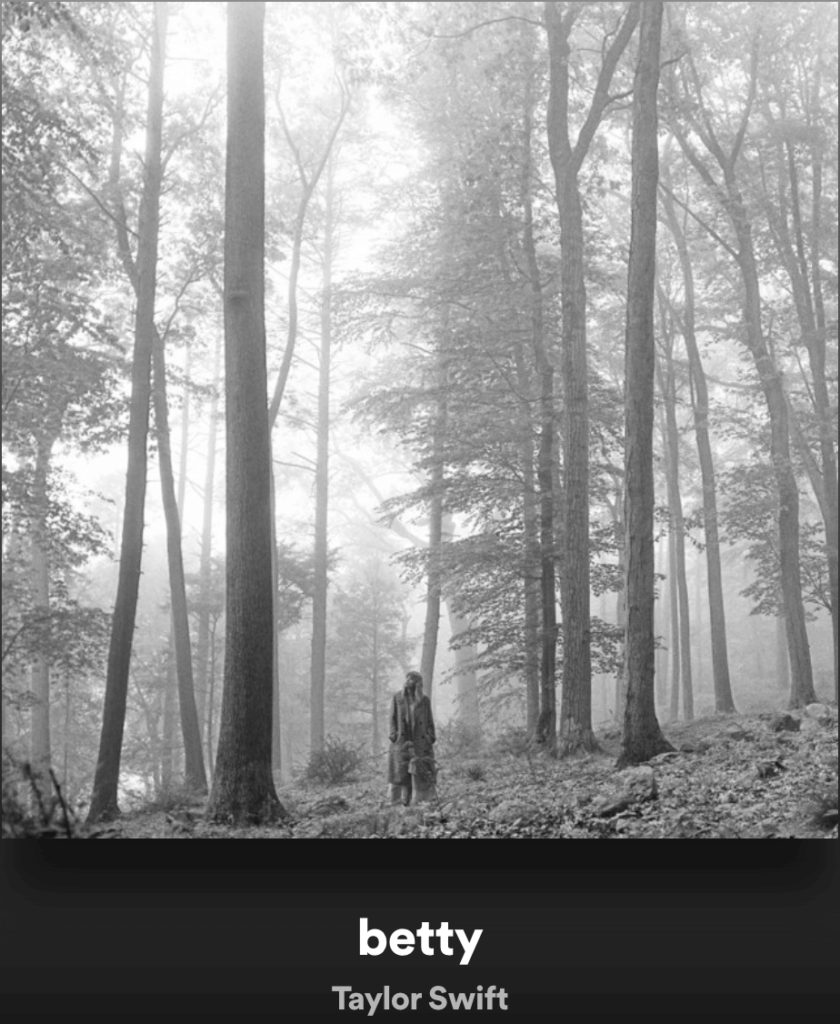
Notable performances include the debut of two duets: Keith Urban and P!nk’s “One Too Many” and Blake Shelton and Gwen Stefani’s “Happy Anywhere.”
The most-anticipated moment of the night, however, came with Taylor Swift’s long-awaited return to the country stage after a seven-year departure with her first-ever live performance of “betty,” a track from her new album folklore. Strumming an acoustic guitar and accompanied by a harmonica, her simple, stripped-back performance was reminiscent of the country hits that defined the singer’s early career, yet with the wisdom and maturity of her later albums.
While this year’s ACM Awards ceremony differed from those of years past, it will certainly be remembered not only for its sheer volume of musical talent, but also for its ability to adapt to these uncertain and unprecedented times.
The Show Must Go On: The Virtual VMAs
by The Cowl Editor on September 17, 2020
Music
by Madison Palmieri ’22 A&E Staff

On Sunday, Aug. 30, the MTV Music Video Awards, or the VMAs, were not held with their usual packed crowds and live performances, but rather with few spectators and pre-recorded outdoor performances. Hosted by Keke Palmer, the program made reference to many important topics. These topics ranged from the 2020 presidential election, with Palmer encouraging viewers to continue fighting against systemic racism, to the global COVID-19 pandemic and the recent passing of actor Chadwick Boseman. The award show’s virtual set-up stands apart as the defining component of this year’s ceremony.
The VMAs combined what the New York Times described as “disparate, green screen-heavy segments, piped-in crowd noise and soundstage performances” with Palmer’s timely commentary and the winners’ speeches in a format that has become increasingly familiar over the past six months, as many aspects of everyday life have shifted to virtual settings.
Although largely unwelcome, this change led to the creation of two new categories for the 2020 VMAs: Best Music Video from Home and Best Quarantine Performance. The former prize was awarded to Ariana Grande and Justin Bieber for their collaboration “Stuck With U” and the latter prize was awarded to CNCO for “Unplugged at Home.” For the sake of normalcy, hopefully there will be no need for these categories next year, but it is a testament to the dedication and talent of such artists as they have adapted their craft to these challenging times.
The work of these talented and dedicated musicians was recognized through other nominations, with some artists receiving multiple awards. Among these artists were Lady Gaga, who received the MTV Tricon Award, the Artist of the Year Award, and whose collaboration with Ariana Grande, “Rain On Me,” won the VMAs for Song of the Year, Best Collaboration, and Best Cinematography; The Weeknd, who received an award in the Video of the Year and Best R&B categories for “Blinding Lights”; and lastly, BTS, who won VMAs for Best Choreography, Best K-Pop, Best Pop, and Best Group for their hit “On.” Winners in some of the other competitive categories were Doja Cat for Push Best New Artist, Megan Thee Stallion for Best Hip-Hop with “Savage,” Taylor Swift for Best Direction with “The Man,” and Coldplay for Best Rock with “Orphans.”
The show also honored “Everyday Heroes,” or medical personnel working on the front lines of the pandemic whose musical renditions, shared via social media over the past six months, have been a source of comfort, hope, and inspiration.
This human element was much-needed. As USA Today explains, “The pumped-in fake crowd noise and the creepy cartoon silhouettes of clapping audience members were a little too ‘Hunger Games’. . .not to mention the faces (of viewers? fans?) that were projected onto animated skyscrapers and billboards.” Although the digital audience eerily resembles that found in video games or in the television show Black Mirror and may be disturbing to some, it was perhaps the clearest indication of how rapidly everyday life has changed in 2020, for better or for worse.
“Calamitous Love and Insurmountable Grief”
by The Cowl Editor on September 3, 2020
Art
folklore Proves Taylor Swift’s Range and Depth
by Madison Palmieri ’22 A&E Staff
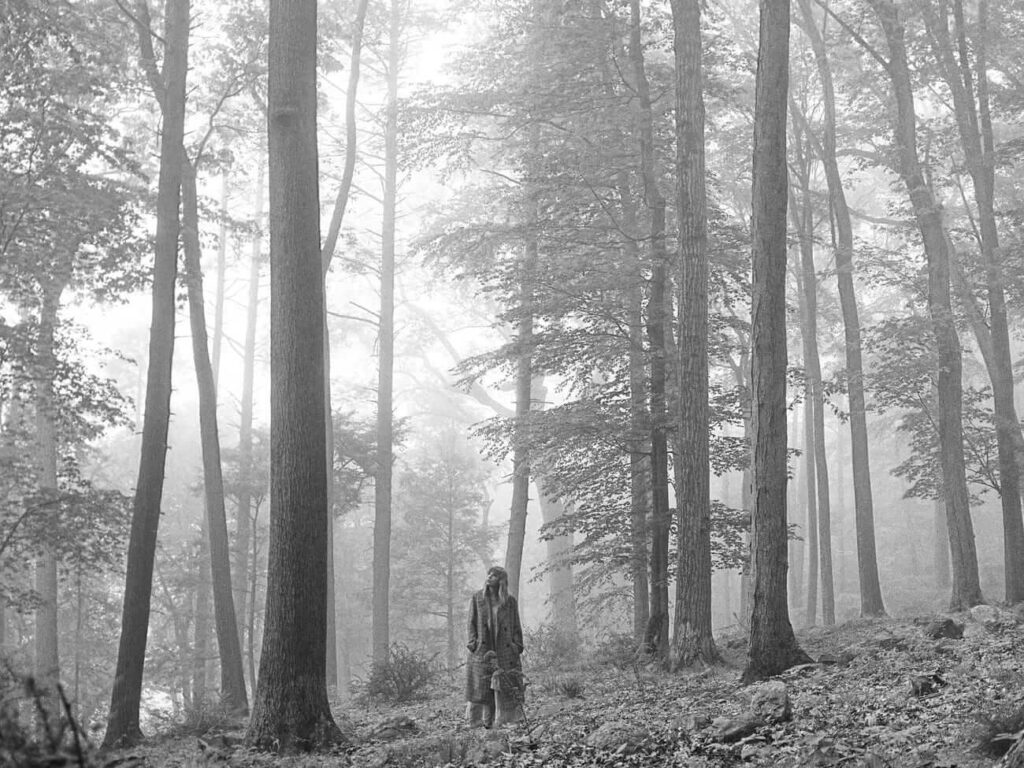
For Taylor Swift fans, these uncertain times have brought an unexpected gift: the singer’s eighth studio album, folklore, which was announced on July 23 and then released at midnight on July 24.
Swift explained the concept behind the album on Instagram: “It started with imagery. Visuals that popped into my head and piqued my curiosity…Pretty soon these images in my head grew faces or names and became characters. I found myself not only writing my own stories, but also writing about or from the perspective of people I’ve never met, people I’ve known, or those I wish I hadn’t…I’ve told these stories to the best of my ability with all the love, wonder, and whimsy they deserve.”
folklore accomplishes just this. Arguably Swift’s most cohesive album, it is also her most mature, both thematically and lyrically. Composed mainly of stripped-back ballads and forgoing made-for-radio hits, folklore introduces casual listeners to the thoughtful storytelling and lyrics for which devoted fans have long admired Swift.
One such fan, Katie Vennard ’22, says, “folklore feels as though you are sitting at a campfire with Taylor Swift herself and she is telling you a ghost story or cautionary tale. This album is haunting, pure poetry, and reminiscent of Swift’s previous albums.”
While folklore certainly draws upon the singer’s previous work, it stands apart from her first seven albums. Maria Gentile ’22 believes, “folklore is somewhat of a game-changer for Swift because of the way that it was advertised and the type of music it consists of. Taylor has proven that she’s a multi-talented artist who can produce an album of any genre and advertise in any way and still be successful. And I think the album is absolutely fantastic and really shows off her incredible voice and lyrics.”
Indeed, from the opening verse to the final chorus, folklore’s composition and delivery is exquisite. For instance, in “the 1,” Swift reminisces about lost love, wondering what might have been if “one thing had been different” and commenting upon imaginary aspects of reality with lyrics like “You know the greatest films of all time were never made.”
The album’s lead single, “cardigan,” is a haunting ballad in which the narrator recalls a former flame “putting her on” even when others discarded her like “an old cardigan under someone’s bed.” The repeated lines “When you are young, they assume you know nothing” and “But I knew you” perfectly illustrate the paradox of youth: simultaneous self-assurance and naivety. The song also references actual folklore in the line “Tried to change the ending / Peter losing Wendy.”
“the last great american dynasty” tells the story of Rebekah Harkness, the former owner of Swift’s Rhode Island mansion who “had a marvelous time ruining everything.” The singer draws a parallel between herself and Harkness, singing about how she also “had a marvelous time ruining everything” by not living according to others’ expectations.
“exile,” a duet with Bon Iver frontman Justin Vernon, is the story of a broken relationship with a lack of communication demonstrated by lyrics such as “’Cause you never gave a warning sign (I gave so many signs)” in which the singers not only echo one another’s words, but also appear to talk over one another. Motifs of patriotism drive the track in lines like “I think I’ve seen this film before / And I didn’t like the ending / You’re not my homeland anymore / So what am I defending now?”
In “my tears ricochet,” the narrator feels betrayed, but recognizes that their betrayer also feels the pain of their fractured relationship. Lyrics such as “And if I’m dead to you why are you at the wake?” imbue the song with the emotional depth for which Swift’s fifth tracks are known. This emotion carries over into “mirrorball,” which can perhaps be best described as a disco-lullaby in which Swift remarks “I can change everything about me to fit in,” using the metaphor of the mirrorball to further develop a motif first explored in reputation.
“seven” speaks of the innocent love shared between childhood friends. The narrator wistfully reminisces on her early years, remembering that “Before I learned civility / I used to scream ferociously / anytime I wanted.” The track is grounded with a simple piano melody that evokes nostalgia for time gone by, a theme continued in “august,” narrated by a jilted woman reminiscing about when she believed she’d found something real in a failed summer love affair.
The stripped-back “this is me trying” sees a narrator attempting to make amends with a past lover and appears to be autobiographical, as exhibited in lyrics like “I’ve been having a hard time adjusting / I had the shiniest wheels, now they’re rusting” and “They told me all my cages were mental / So I got wasted like all my potential.” These lines reflect the fear of fading from prominence that musical artists face. Similarly acoustic is “illicit affairs” in which Swift narrates the fallout of a forbidden romance through tragic, colorful verse.
In one of the most clear references to folklore on the album, “invisible string” presents a modern take on the East Asian legend of the Red String of Fate in which a thread ties soulmates together. The narrator references personal details of her and her partner’s lives, musing, “Isn’t it just so pretty to think / All along there was some / Invisible string / Tying you to me?” As with other songs in the album, the juxtaposition of the magical and mundane dominates this delicate tune.
While “mad woman” cunningly address allegations against Swift’s character and condemns her detractors, suggesting that their hatred forced her to become said “mad woman,” “epiphany” is full of vulnerability and emotion, comparing Swift’s grandfather’s experience fighting in World War II to the war-like conditions that frontline workers are facing during the COVID-19 pandemic. Her desperation to understand the reason for these horrors reads almost like a prayer: “Only twenty minutes to sleep / But you dream of some epiphany / Just one single glimpse of relief / To make some sense of what you’ve seen.”
Fans of Swift’s early albums will be excited to see that she returns to her country roots with “betty,” a harmonica-heavy ballad about the sort of young love that defined her early hits. While the song’s arrangement and subject matter are both simplistic, its delivery is timeless and its youthful tone perfectly contrasts with the maturity of the following track, “peace,” in which Swift declares with guitar riffs and an indie-rock sound that “Our coming of age has come and gone” and ponders the entanglement of her personal and private lives, asking her partner, “Would it be enough if I could never give you peace?”
Although the official closing track, “hoax,” is a melancholy exploration of the difficulties that accompany love, the bonus track, “the lakes,” offers a more optimistic view on the matter. In the song, named for the Lake District, Swift name-drops one of its most famous residents, William Wordsworth, as she fantasizes about escaping into nature and away from the stresses of modern life, which is full of “cynical clones/These hunters with cell phones.” But, like a modern-day Romantic poet, she declares that she will not embrace this lifestyle without her “muse.” Whether she’s referencing her partner, her friends, her family, or even her fans, this declaration signifies that Swift will masterfully reinvent herself again just as she has done so many times before.
A Dream Becomes Reality: Friends Reunion
by The Cowl Editor on March 5, 2020
Arts & Entertainment
Fans Rejoice over Much Anticipated Return
by: Madison Palmieri ’22 A&E Staff
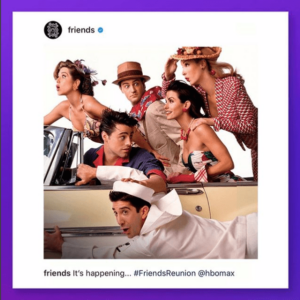
As the hit sitcom Friends experiences a resurgence in popularity thanks to the rise of streaming services such as Netflix, one question consistently plagues the mind of its fans: will the show ever have a reunion?
In an era of reboots and remakes of beloved shows, it is only natural to wonder if the cast of such an iconic series will ever be reunited. In the past, when asked about the possibility of a reunion, the six main cast members responded with a variety of answers.
In a 2018 interview, Jennifer Aniston optimistically suggested that “anything is a possibility.” On the other hand, in 2017, Matthew Perry stated, “I have this nightmare that we do Friends again and nobody cares. We do a whole series, we come back, and nobody cares about it. So if anybody asks me, I’m gonna say no. The thing is: we ended on such a high. We can’t beat it. Why would we go and do it again?”
Thus, the possibility of a reunion of any sort, whether it be a new series or a one-time special, was always uncertain—until last week.
On Friday, February 21, the main cast members took to Instagram to share the news that a reunion would, indeed, be coming soon. Featuring the caption “It’s happening,” most of the cast posted a throwback picture from the series’ original run, tagging their fellow castmates as well as HBO Max, the new service that will stream the reunion.
The special, as well as the entire series, will be available to viewers once the service debuts and is set to be filmed on Stage 24 in the Warner Bros. Studio lot, also known as the Friends soundstage.
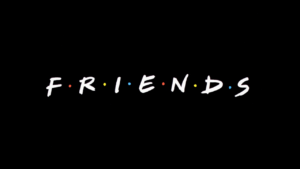
In a statement released last week, HBO Max’s chief content officer, Kevin Reilly, remarked, “You could call this the one where they all got back together.” He continued, saying, “I became aware of Friends when it was in the very early stages of development and then had the opportunity to work on the series many years later and have delighted in seeing it catch on with viewers generation after generation. It taps into an era when friends—and audiences—gathered together in real time, and we think this reunion special will capture that spirit, uniting original and new fans.”
Indeed, fans are already enthusiastic about what is surely one of the most highly anticipated entertainment events of the year. “I’m really excited for it! I can’t wait to see what happens since it’s unscripted,” exclaimed Caroline Cahill ‘22. “I haven’t watched Friends a lot since it left Netflix, and this reunion is definitely long overdue.”
Since HBO Max is set to launch in May of 2020, there is not too long of a wait in store and with it will come an unforgettable experience for Friends fans everywhere.
Netflix Releases P.S. I Still Love You
by The Cowl Editor on February 27, 2020
Film and Television
TATBILB Sequel Excites and Disappoints
by Madison Palmieri ’22 A&E Staff
The much-anticipated sequel to Netflix’s 2018 hit film To All the Boys I’ve Loved Before premiered on the streaming service on Feb. 12 to positive reviews, earning a 6.1 out of 10 rating on IMDb and 72 percent on Rotten Tomatoes.
The first film follows teenager Lara Jean Covey (Lana Condor), whose life is upended when the letters she wrote to her various love interests over the years are mistakenly mailed. She agrees to pretend to be the girlfriend of one of the boys, Peter Kavinsky (Noah Centineo), in order to make his ex-girlfriend jealous. Predictably, but nonetheless romantically, the pair begin to fall for one another, agreeing to actually date at the end of the movie.

In P.S. I Still Love You, Peter and Lara Jean’s fledgling relationship is soon threatened by his friendship with his ex-girlfriend and her coincidental encounter with another one of her former crushes. By the end of the film, however, the pair reconciles and reignites their romance.
Aside from Condor and Centineo, the movie features Emilija Baranac as Peter’s ex-girlfriend Gen, Jordan Fisher as Lara Jean’s old crush John Ambrose McClaren, Anna Cathcart and Janel Parrish as her sisters, and Madeleine Arthur as her best friend, Chris.
The films are based on a set of popular young adult novels by Jenny Han, published between 2014 and 2017. The first book in the series, To All the Boys I’ve Loved Before, has been published in over 30 languages and spent 40 weeks on the New York Times Best Seller List.
The novels’ transition to screen follows a larger trend of young adult novel adaptations that have graced Netflix in recent history, with everything from Anne with an E (based on Anne of Green Gables) to 13 Reasons Why.
With such a volume of material to watch, what made TATBILB so popular? According to a recent article in The Atlantic, the plot was fairly predictable, but “the adaptation’s delightful spin on classic teen rom-com tropes did take many viewers by surprise.”
For some viewers, however, P.S. I Still Love You did not live up to the magical whimsy of the first film. “It felt like there wasn’t enough of a plot twist. Nothing really made me sit on the edge of my seat. However, I really liked that there were two love interests!” Alexandra Velleca ’22 notes.
Regardless of whether P.S. I Still Love You lives up to the hype generated by its predecessor, fans of Peter and Lara Jean will certainly look forward to the Netflix premiere of the third and final film in the trilogy, Always and Forever, Lara Jean.
Lin-Manuel Miranda Announces Hamilton Film
by The Cowl Editor on February 13, 2020
Film and Television
How the Movie Will Feature the Original Cast and Stage
by Madison Palmieri ’22 A&E Staff
Fans of Hamilton will be satisfied to know that the hit Broadway musical is coming to the big screen. On Monday, February 3, Lin-Manuel Miranda, the show’s creator who originally starred as the titular Founding Father, announced on Twitter that a film featuring the original Broadway cast of the musical and filmed at the Richard Rodgers Theatre is in the works. Disney is set to produce the movie, which currently has a release date of October 15, 2021.
Some Providence College students count themselves among the many fans already excited to see the movie. “I’m super excited that they are making a film version of the musical Hamilton. I think it’s great that they are doing a recording of the live stage production and not an adaptation,” says Kara Berlin-Gallo ’21.
“In my opinion, some film adaptations of musicals have not been great. I feel like Hollywood cares more about hiring big name actors instead of hiring Broadway stars who can really sing. Therefore, what I like about this Hamilton film is that people can see the original cast and the original staged production, which is so incredible and almost impossible to recreate for a film. I honestly cannot wait for the movie to come out and I’m counting down the days until I can see this incredible production in the theaters!”
Indeed, the original cast and stage footage appear to be the facets of the production that Hamilton fans are most excited about. Having seen the show on stage, the show’s lighting, costumes, and set add symbolism and another dimension to Hamilton’s story,” explains Allison Kohne ’22. “The original cast is also iconic, so I’m excited to see them in their original roles.”
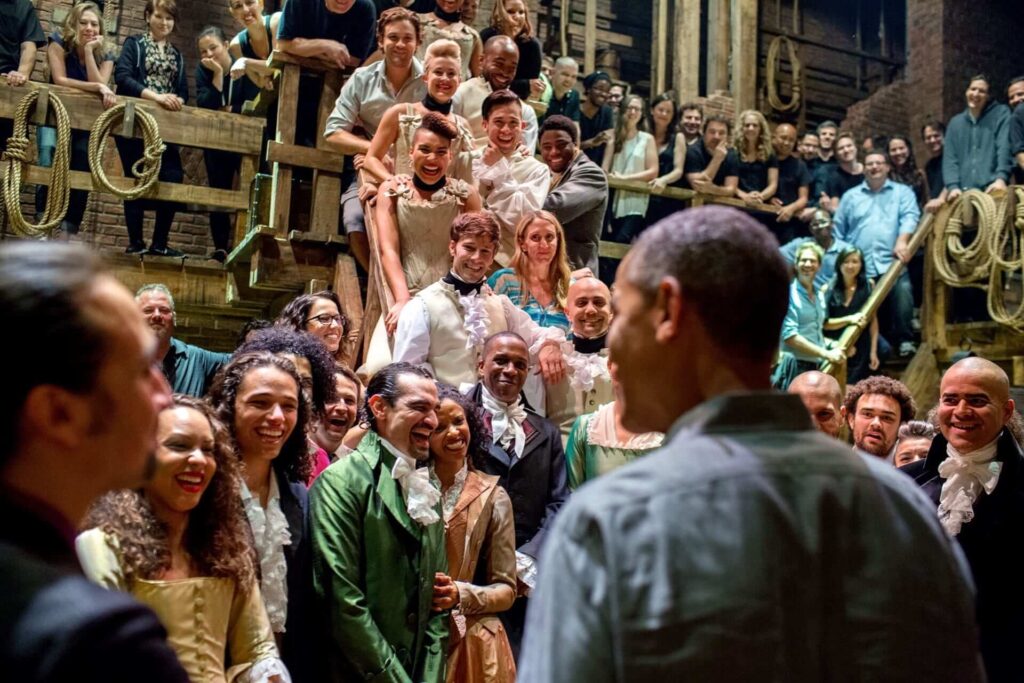
The musical first premiered at the Richard Rodgers Theatre in early 2015, and quickly garnered a mass following, catapulting its cast to stardom and receiving 11 Tony Awards, the Pulitzer Prize for Drama, and the Grammy Award for Best Musical Theatre Album.
Hamilton follows the life and times of Alexander Hamilton as he and other historical figures attempt to create a new nation while facing the everyday struggles of life, love, and loss. Notably, it incorporates a wide variety of musical genres into its soundtrack, ranging from hip-hop and rap to more traditional showtunes.
Although he is best known for Hamilton, this show is not Lin-Manuel Miranda’s first Broadway musical. In fact, a film adaptation of his 2008 show, In the Heights, will hit theaters on June 26. Unlike the upcoming Hamilton film, however, In the Heights will feature a new cast.
Nonetheless, both films are sure to please audiences. While In the Heights will be released in a matter of months, those eagerly anticipating Hamilton are going to have to wait for it.
